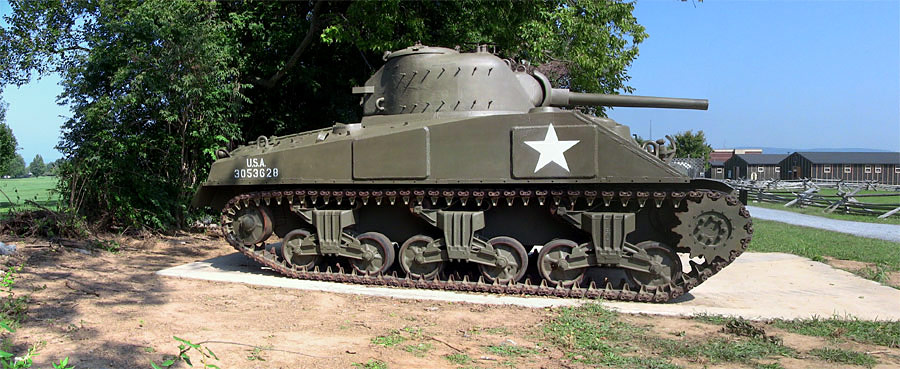

The M4 Sherman Tank served as the Allied Force's main battle tank for the majority of World War II. The Sherman became the United States' primary tank during its largely successful use in the campaigns in North Africa, Italy, Normandy, and especially during the armored charge across the Low Countries and Germany as the war neared its end. The Sherman entered service in 1941 and first saw action in 1942. The design was so successful the manufacturers built several different models, including vehicles with howitzers, mine clearing flails, rockets, and flame throwers. Some were even equipped with amphibious capabilities or bridges attached to the back.
The Sherman tank required a crew of five soldiers to operate at full capacity. The tank was upgraded often by U.S. manufacturers and the Army, to include better barrels, better armor, and better suspension. 75mm main guns were mounted in the first M4s, but were eventually replaced by 76mm barrels capable of firing more powerful rounds against the thick German tank armor. The Sherman tanks were faster and more maneuverable than German heavy tanks, and featured a mechanized rotating turret. In an open field, the Sherman could outmaneuver and fire more rapidly than their German counterparts, who had to turn their turrets with hand cranks.

The PAK 43/41 was the mainstay of the German anti-tank artillery during the Second World War. The big 88mm round fired from the piece easily penetrated the armor of the Sherman, the Allies main battle tank. The PAK 43/41 was superior to its 75mm predecessor, the PAK 40, in both firepower and construction. The towed PAK 43/41 was situated on a structural steel carriage, featured a shield of plated armor for the crew, and was reloaded by a new sliding breach block that was easier to load. By the D-Day invasion in June of 1944, 88mm cannons, including the PAK 43/41 and the self-propelled equivalent, were stationed to pour high explosive and anti-tank shells onto the invading Allies. Many of the PAK 43/41 cannons the Allied troops destroyed were protected by concrete casemates overlooking the beaches of Normandy.